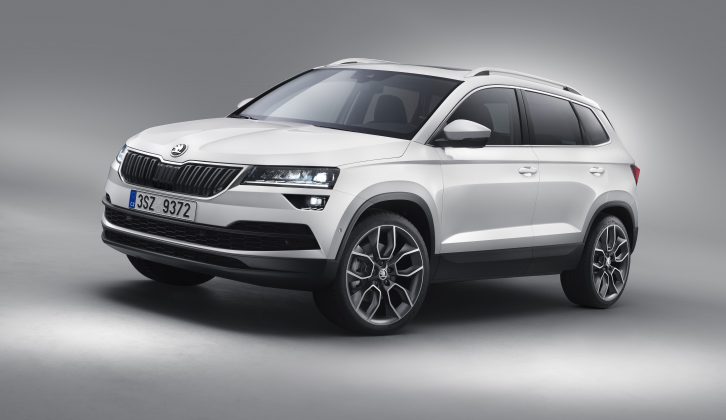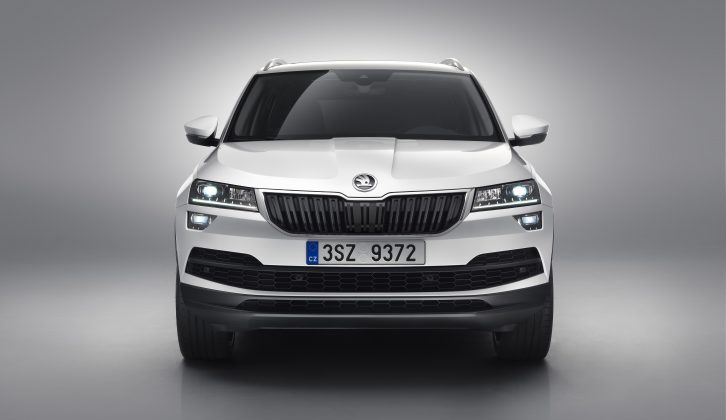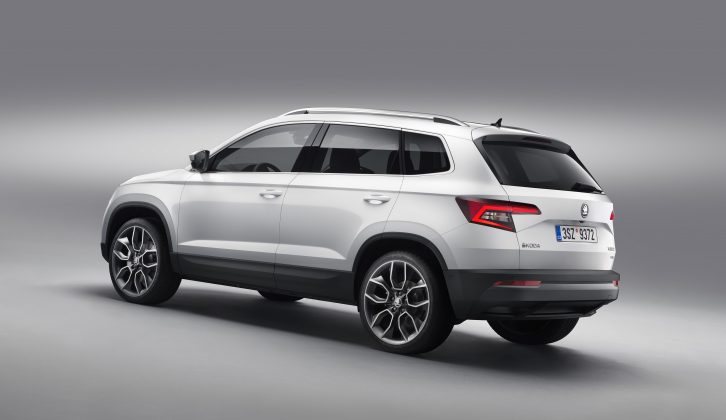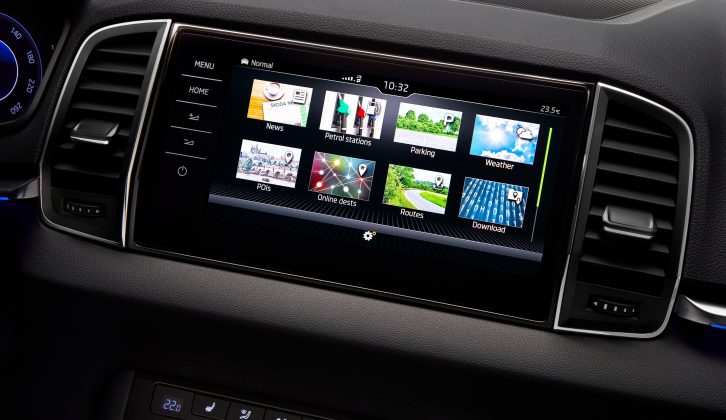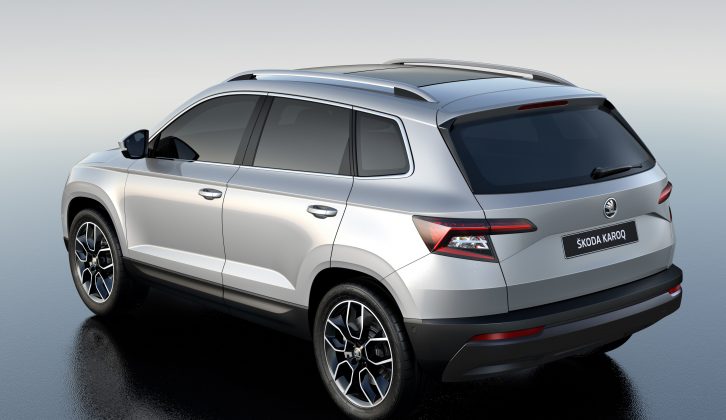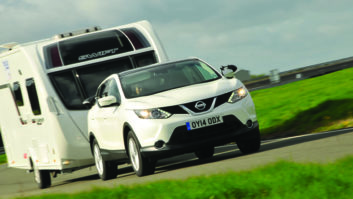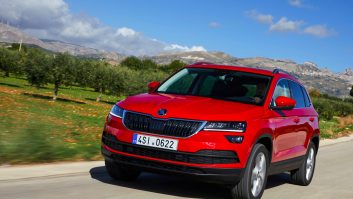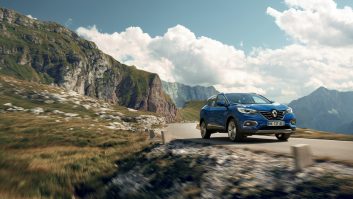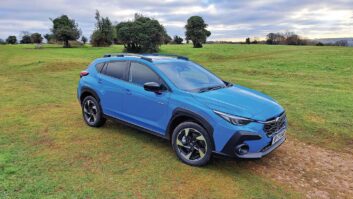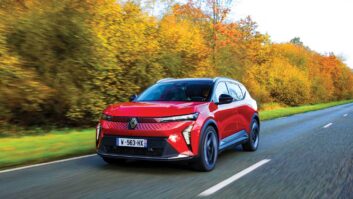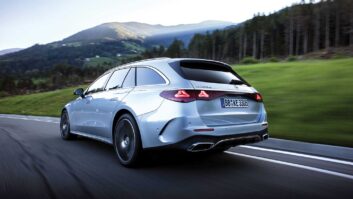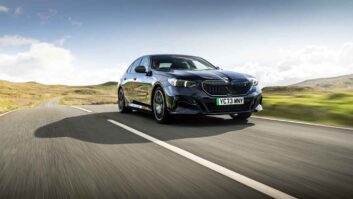Škoda has revealed the new Karoq, which will replace the Yeti crossover later this year.
It’s a bigger car than the Yeti with new engines and high-tech driver-assistance features.
But will it prove as capable a tow car?
Sad to say goodbye
The name change won’t make a blind bit of difference to how well the car tows a caravan, but I’m disappointed the Yeti name has been ditched.
Since it was launched in 2009 the Yeti has been hugely popular, becoming one of Škoda’s most easily recognisable models.
While there’s some logic in how the Karoq name ties in with the larger Kodiaq to create a family style for the company’s crossovers and SUVs, I think Škoda would have been better off keeping the link with the old model.
Is bigger better?
The new Karoq is 4382mm long, some 160mm (just over six inches) longer than the Yeti. The wheelbase (the distance between the front and rear wheels) has also increased, so there’s more legroom than before.
Five engines will be available, two petrols and three diesels, with outputs ranging from 115PS (113bhp) to 190PS (187bhp). All have a stop-start system and regenerative braking to reduce fuel consumption and cut emissions, with a carbon dioxide output of 115g/km for the 150PS (148bhp) 2.0-litre diesel.
With the exception of the most powerful diesel, the engines will be offered with a choice of a six-speed manual or a seven-speed DSG automatic. The range-topping diesel will be DSG-only.
Kerbweights and towing limits haven’t been confirmed, although given that the Karoq has a lot in common with the Seat Ateca under the skin it’s likely to be similar in terms of on-paper towing credentials.
That suggests a range of kerbweights from close to 1280kg for the lightest front-wheel-drive petrol, to around 1600kg for the most powerful diesel 4×4.
The 187bhp diesel 4×4 ought to be the most capable tow car. But the petrol engines look interesting, especially the 150PS (148bhp) 1.5 TSI.
This has what Škoda calls Active Cylinder Technology to turn off two cylinders for a short time when their power isn’t needed, to reduce fuel use. The 1.5 TSI’s combined figure of 55.4mpg would have been impressive for a diesel car of this size 10 or 15 years ago.
Space to impress
Throughout its life, the Yeti has been one of the most enjoyable crossovers to drive, something Škoda will be keen to build on with the Karoq. And we want to know what tow car abilities it has, having enjoyed towing with the Yeti.
Our colleagues on What Car? have already driven a prototype, with mixed feelings about the Karoq’s set-up. The ride is said to be softer than the Seat Ateca’s, but rather fidgety.
The steering is over-assisted, too, according to What Car?‘s review. There’s still time for Škoda to fine-tune the Karoq’s chassis before production, though.
What’s not in doubt is that the Karoq is more spacious than the Yeti. There’s more rear legroom than before, and boot capacity has increased from 416 to 521 litres with the rear seats upright. Fold the seats down and the capacity goes up to 1630 litres.
Škoda’s ‘VarioFlex’ seating allows the three individual rear seats to be folded separately and removed completely. Take them all out and the luggage capacity jumps to an estate-car-beating 1810 litres – although this does mean finding somewhere to store the seats.
More practical and more premium?
As well as being more practical, the Karoq also marks a healthy step forward in cabin quality, according to What Car?. Think better-finished plastics, upgraded touchscreen infotainment systems, and a digital display instead of regular dials (although this feature is likely to be optional).
Smartphone users will be pleased to know the Škoda Karoq will be compatible with Apple CarPlay, Android Auto and MirrorLink.
There’s a whole family of driver assistance systems, including Park Assist (to help the driver park), Lane Assist (to help stay in lane), Traffic Jam Assist (which moves and stops the car in heavy traffic without the driver touching the pedals), Front Assist (which can apply the brakes if the driver doesn’t) and Emergency Assist (which intervenes if the driver is incapable of driving). Mr and Mrs Assist must be exhausted.
At least as important to caravanners will be the availability of an electrically retractable tow bar, a feature more often found on much larger and more expensive cars.
We won’t know how much the Karoq is going to cost until nearer the car’s late-2017 on-sale date. However, the Seat Ateca range runs from £18,150 to £30,795. Chances are the Škoda will undercut the Seat slightly.
Will the Karoq tow as well as the Yeti? Well, we’ve been impressed with the Karoq’s close relative, the Seat Ateca, so provided Škoda’s engineers can successfully fine-tune the suspension between now and the chassis’s sign off, there’s every reason to think the Karoq will be a very capable tow car.
There’s quite a wait before we can find out, but we’re very much looking forward to towing with the new Škoda Karoq.
There's the availability of an electrically retractable tow bar, a feature more often found on much larger and more expensive cars
